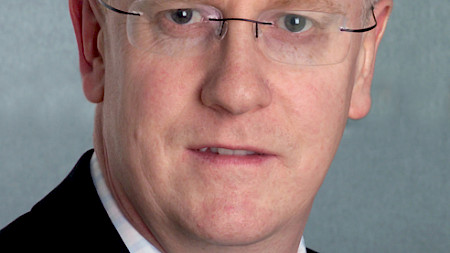18.12.2025, 15:23 Uhr
Ein allfälliger Wegzug der UBS aus Zürich hätte direkte Folgen für den Finanzplatz Zürich, die Stadt und den Kanton. Dies schreibt der Regierungsrat. Hintergrund sind die Diskussionen um die künftige...


As we pass the mid-year point, the question raises whether history is repeating itself with the bond assets most affected by the Feds more hawkish tone. Paul Brain, fixed income leader at Newton Investment Management, shares his views.
Typically, when the US Federal Reserve sneezes, other central banks worry whether theyll catch a cold. Yet the real casualties of this year's increasingly hawkish stance look to be emerging market (EM) sovereigns, says Paul Brain, fixed income team leader at Newton Investment Management. Six months into the year is a nice time to reflect on what has come before.
The Fed's shifting monetary policy
Within fixed income markets, one factor has dominated all asset classes in the first half, either directly or indirectly the US Federal Reserve's shifting monetary policy position as it continued lifting interest rates off their historical lows and reducing the size of its bond holdings. As such, global bond investors have had a tough time since end December 2017; the resultant volatility as Jerome Powell's Fed withdraws US dollar liquidity is hard enough but it sits upon a particularly fragile political landscape due to the international trade tariffs being driven by US president Donald Trump. Since the equity volatility spike back in February, Brain says developed market government bonds - the first ones to cause capital losses for clients - have stabilised but Emerging Markets (EM) sovereigns are now having a much tougher time, with that trend looking set to continue.
EM sovereigns feel the impact the most
"We have been describing 2018 as a transition year when fixed income markets move down in stages and the emphasis will be on protecting capital," he says. Over the six months to 28 June, government bonds have only fallen 0.12% while EM sovereigns lost 6.49%. Comfortably in the middle ground are investment grade and high yield corporates, which lost 2.58% and 1.65% respectively.
Yet Brain says a look back at history calls attention to a pattern to the order of Fed-related fallout. "It is interesting to study the order of which risk assets rally when dollar liquidity is ramped up and then which ones fall when it is removed," he adds. "I seem to remember that emerging markets and commodities led the way when the US introduced the Troubled Asset Relief Program, or TARP, in 2009 and then credit and equities played catch-up. Conversely the increase in Fed funds and the US dollar in 1995-2000 caused problems in Asia and Russia in 1998 and then equities in 2000." Drawing parallels with 20 years ago, Brain says the 1998 period saw a widening of spreads due to dollar liquidity being taken out, so it hit those foreign governments with US borrowings first.
Lessons learned from the past
Brain explains that despite the gradually rising borrowing costs, US corporates tend to be cushioned at the beginning of a tightening cycle, whereas EM borrowers are not as privileged struggling to contend with higher US rates, less liquidity and a stronger greenback. While the summer may offer a bit of respite, Brain expects the period of EM underperformance to continue, with other riskier assets, such as high yield, also vulnerable at the hand of the Feds tightening programme. "History teaches that the US Treasury market tends to fall first, followed by EM and then high yield follows suit, by which time Treasuries are rallying once again," concludes the expert.